Danish Aebleskiver
Danish Aebleskiver is a family recipe that goes back generations and is perfect for breakfast or as sweet treat snack.
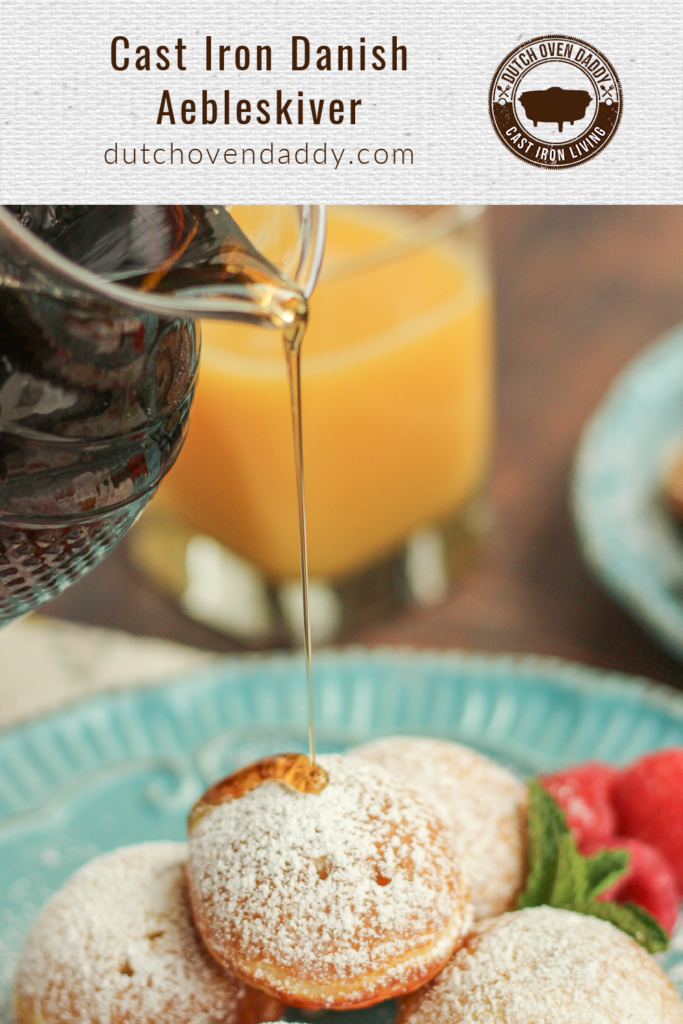
This post has been updated from its original April 6, 2018 publishing with new content, photography, and recipe card clarifications.
Danish Aebleskiver are an old family tradition straight from the old world. This is my great-grandmother Peterson’s recipe who emigrated to the United States from Denmark. Fortunately for me, this recipe was tucked away in a family cookbook, left for me to discover years later.
I honestly didn’t know about them until after my cast iron addiction set in and I saw the pan in an antique store. I told my dad about the pan and he told me about his grandmother’s recipe in our family cookbook. It was almost like she wanted me to help rediscover an old family recipe.
Sadly for me, I never knew my great grandma Peterson. But the legends and lore around her live on. She was a short but incredible cook who used her knitting needles to flip these bad boys faster than some fast-food burger professional.
Once I found the recipe in the family cookbook, I set about trying to figure out how to make them.
It did take me some time to figure out exactly how these were to be made based on the written instructions she left (and as they were printed in our family cookbook) but once I did, these were spot on.
Now this recipe is cherished by my family and make them regularly.
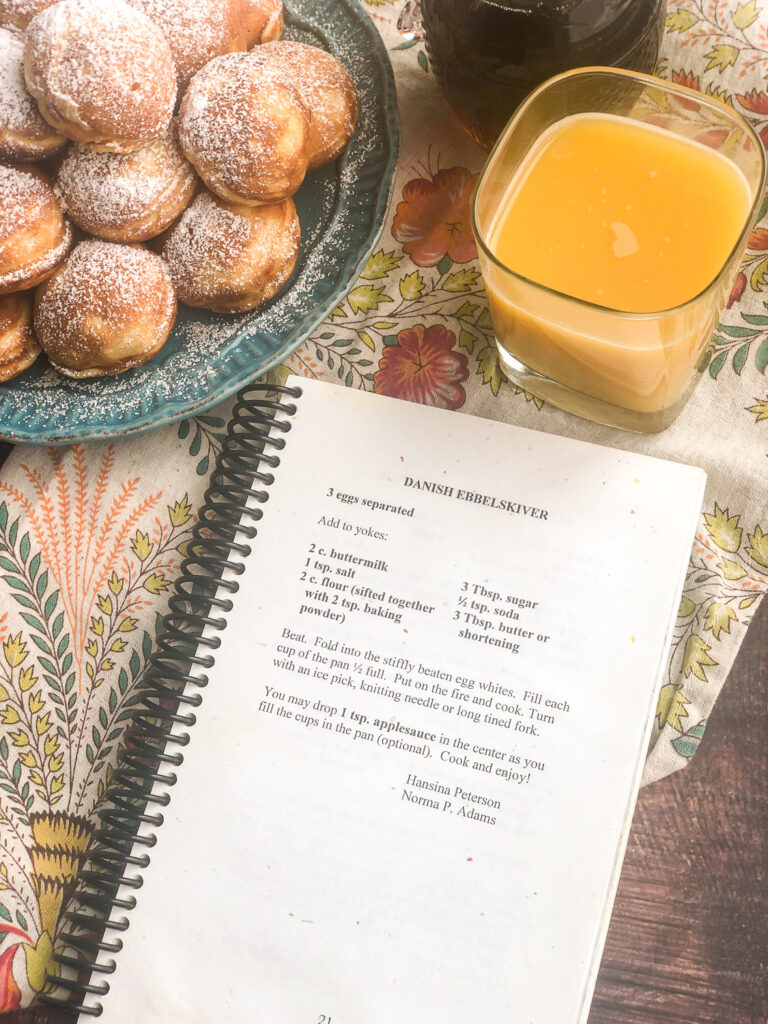
What is an aebleskiver?
An aebleskiver or ebelskiver is a round Danish treat or snack similar to pancakes. They’re also comparable to European pancakes or Yorkshire pudding.
The direct Danish translation into English means apple slices. Once upon a time, the end of harvest apples that were left over were sliced and baked into these little balls of deliciousness.
While these look like large donut holes, they are so much better. They’re basically the happy offspring of a pancake and a donut hole.
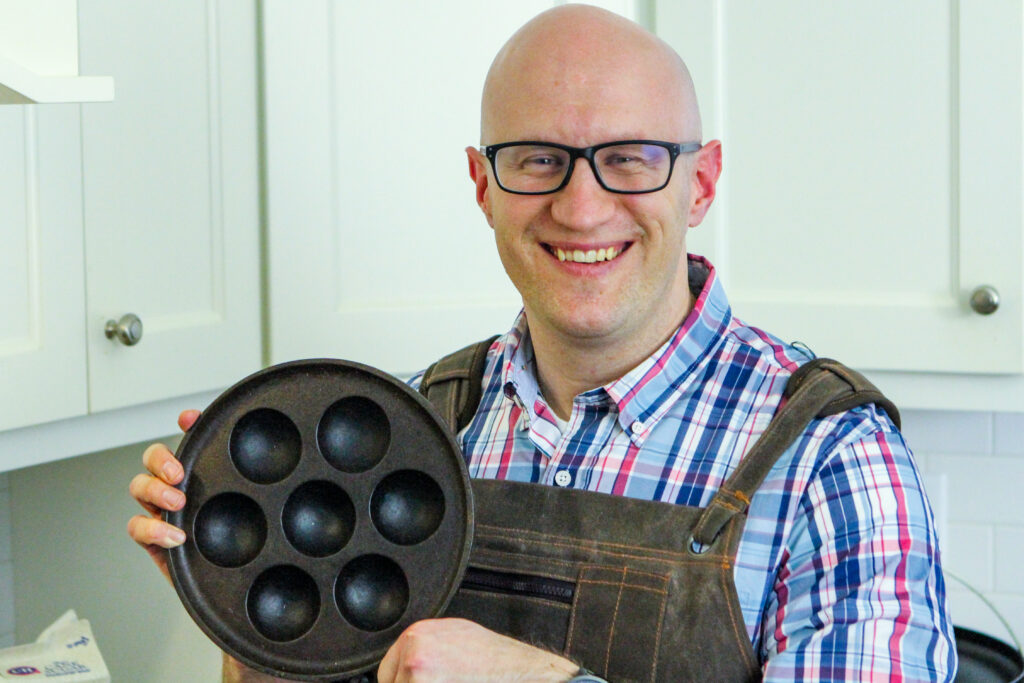
Fun facts about Aebleskiver
- Aebleskiver is plural. One single ball is called an Aebleskive. If you see an -s on the end, that’s grammatically incorrect.
- Considered mostly street food now.
- Traditionally served in a set of three sprinkled with powdered sugar and a dollop of jam.
- Most often sold during the winter or Christmas time with glogg, a type of mulled wine or Scandinavian coffee.
How to Make Danish Aebleskiver
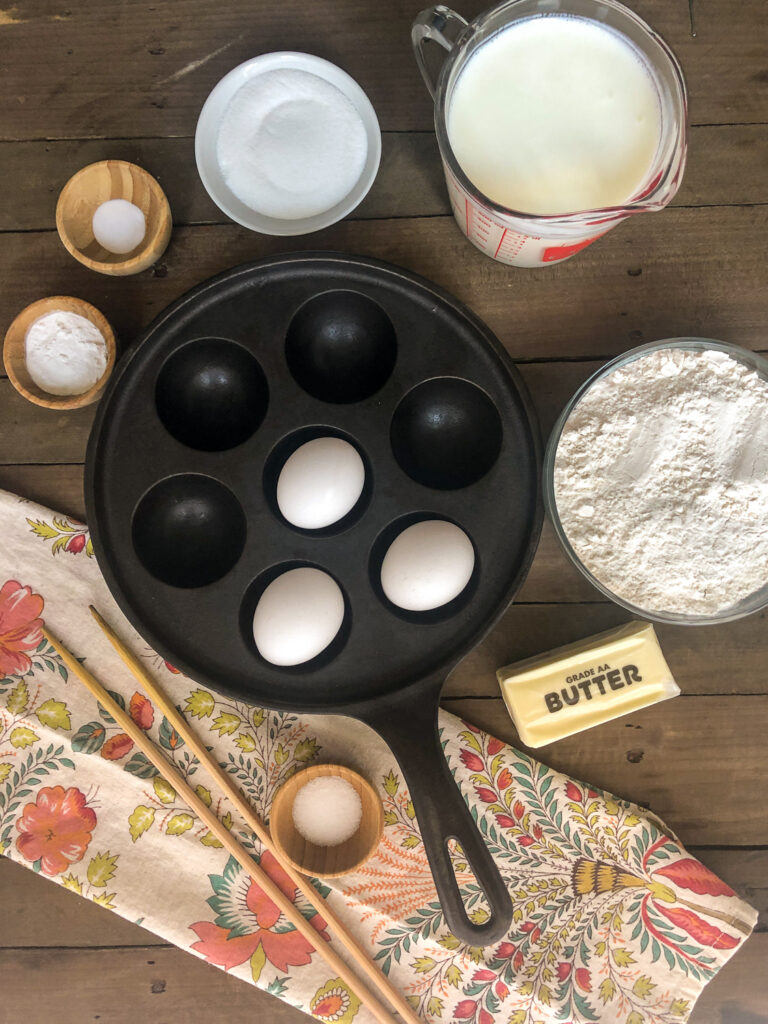
Ingredients and Equipment:
- Cast Iron Aebleskiver pan – If you’re going traditional, it must be cast iron. They do make a flat bottom pan for those electric stoves.
- Knitting needle, stir-fry chopstick, ice pick, long pokey thing like a fork, meat fork, or your favorite thin stick – this will be used to flip the balls of dough over as they cook.
- Cooking Spray – While a properly seasoned cast iron pan is non-stick, these can be a bit temperamental, so giving the pan a good spray is just good sense.
- 3 eggs – we used large, but extra large are fine too. If your medium eggs are on the skint side, maybe go with 4, but use your best baking judgement.
- 2 cups buttermilk – this is a must. In a pinch, if you don’t have buttermilk, you can add two tablespoons of white vinegar to a measuring cup, then fill the rest up to the 2-cup mark with milk. Give it a quick, but gentle stir and allow it to sit for 5 minutes before mixing it in.
- 2 cups all-purpose flour – this is what my grandma used, so use it.
- 2 teaspoons baking powder – the leavening or rising agent.
- 1/2 teaspoon baking soda – another leavening or rising agent.
- 3 tablespoons sugar – this will make them slightly sweet, suitable for dessert but not so sweet they’re inappropriate for breakfast (because let’s face it, we’re adding powdered sugar and maple syrup to them at breakfast anyway.)
- 3 tablespoons salted butter – you can use unsalted too. The butter must be at room temperature in order to properly melt into the dough.
Step by Step Directions for Making Danish Aebleskiver




Step 1: Spray the pan with cooking spray and begin to preheat on medium-low.
Double sift, yes DOUBLE sift the dry ingredients (flour, sugar, baking powder, baking soda, and salt) together in a bowl. Set aside.


Step 2: Separate the egg whites from yolks into different bowls. Beat the egg whites until only slightly frothy.



Step 3: Slice the butter into tablespoons, then cut each tablespoon into four cubes. The butter needs to be at room temperature, so it probably won’t be very pretty once you start cutting the pats, but that’s ok.
Pour the buttermilk into the egg yolk bowl and add the butter pieces; whisk to break the yolks and combine into the buttermilk. The butter will not incorporate at this point.



Step 4: Slowly add the dry ingredients into the wet ingredients. The batter will be lumpy, especially due to the butter. Don’t over mix or whisk, but do break up any large clumps of dry ingredients.
Fold in the egg whites.
The batter should be similar in consistency to that of pancake batter.






Step 5: Fill each hole with batter about 3/4 of the way full. DO NOT FILL COMPLETELY. They will rise as they cook and need the space to expand (or you’ll have a mess on your hands).
Unlike pancakes, the bubbles that form along the top do not indicate they are ready to be flipped. However, they are a sign that they will SOON be ready to flip. Watch for the dough to begin to pull away from the side of the cup. The dough pulling away and the bubbles mean it’s time to flip them over.
Using the pokey device of your choosing, press into the aebelskiver at an angle, and using your wrist in a swiping motion, push the aebelskiver up along the side of the cup and roll it over. Repeat for the entire pan.
Usually, once you’ve filled the last ball, the first one you flipped is done and can be removed from the pan.
Dust these Danish ebleskiver with powdered sugar and drizzle with maple syrup.
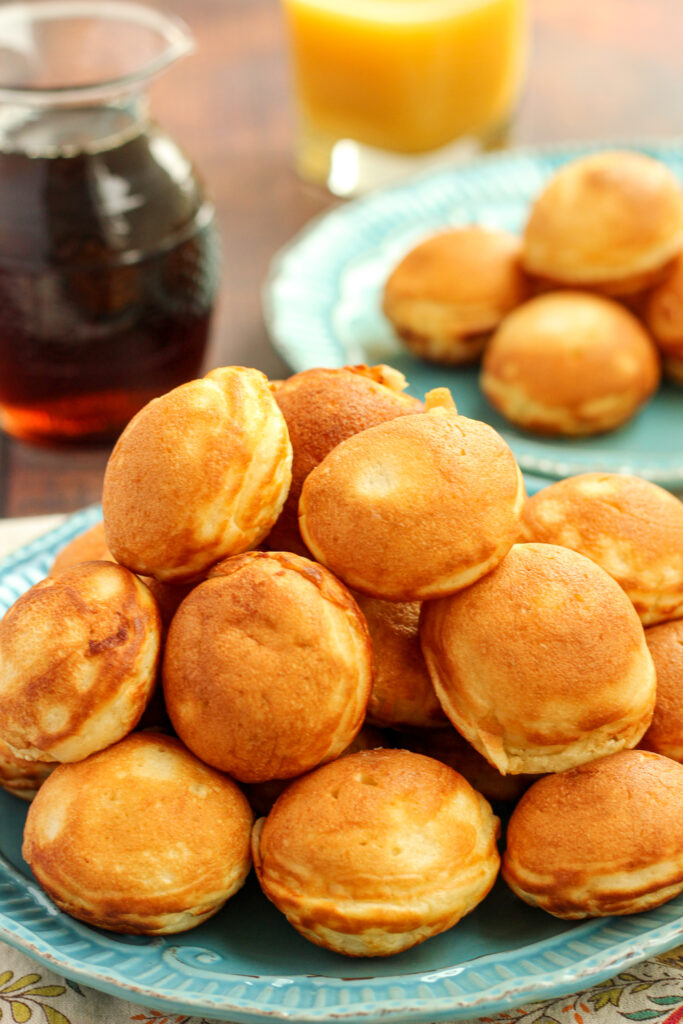
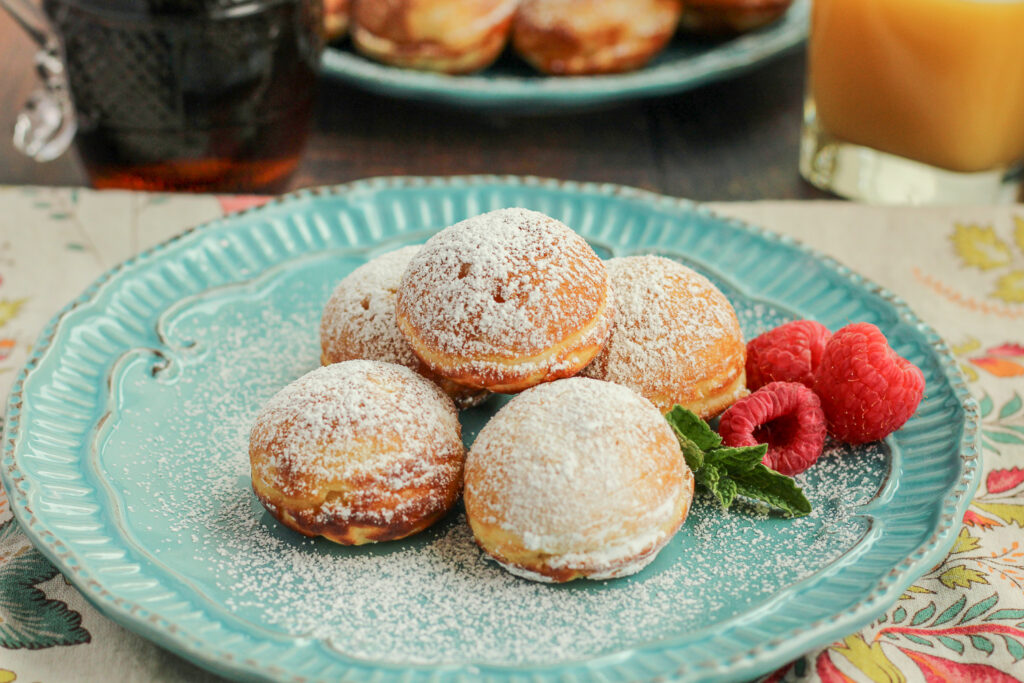
Danish Aebleskiver
Equipment
- Cast Iron Aebleskiver Pan
Ingredients
- 2 cups all-purpose flour
- 1 tsp salt
- 2 tsp baking powder
- ½ tsp baking soda
- 3 tbsp sugar
- 3 eggs separated
- 2 cups buttermilk
- 3 tbsp butter cubed
- cooking spray
Optional Toppings
- powdered sugar
- maple syrup
Instructions
- Spray cast iron aebleskiver pan with buttered cooking spray.
- Preheat to medium-low heat on the stove top.
- Double sift the flour, salt, baking powder, baking soda, and sugar into a medium sized mixing bowl; set aside.
- Separate the egg whites from the egg yolks into different bowls.
- Add the buttermilk and butter to the egg yolks; whisk to combine.
- Gently beat the egg whites and set aside.
- Slowly mix the dry ingredients into the wet ingredients until the batter has formed.
- Gently fold in the beaten egg whites, the batter should be the consistency of pancake batter.
- Fill each cast iron ableskive cup ¾ full of mixture.
- Turn with a fork or knitting needle when the batter starts to pull away from the pan.
- They will be ready to plate when both sides are golden brown.
Optional Serving
- Dust or sift with powdered sugar and drizzle with maple syrup.
Notes
Nutrition
Dutch Oven Daddy is not a dietician or nutritionist, and any nutritional information shared is only an estimate. We recommend running the ingredients through an online nutritional calculator if you need to verify any information.
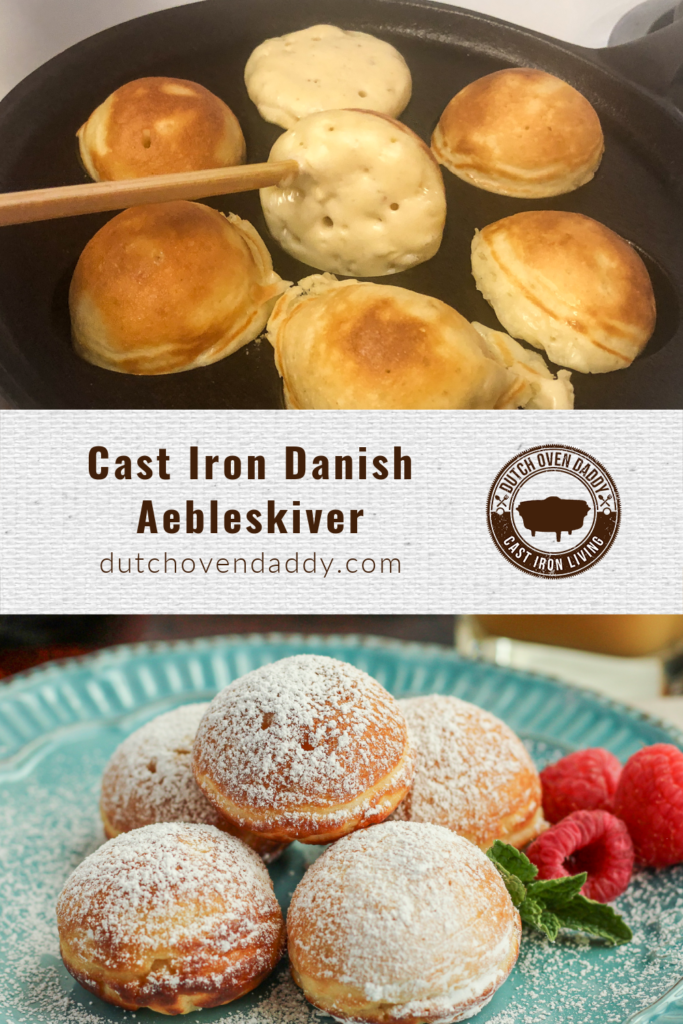
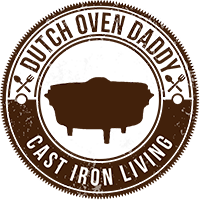
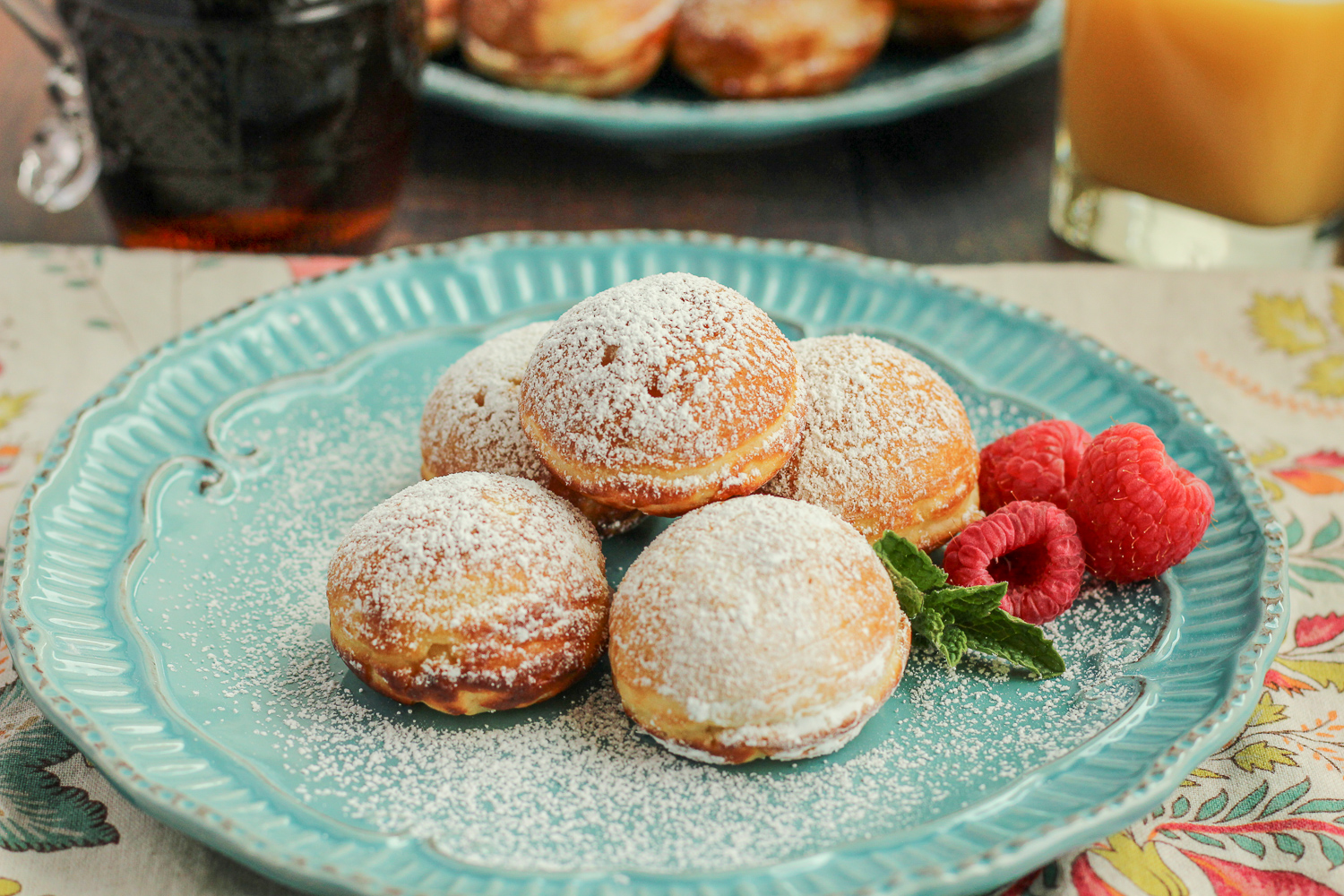
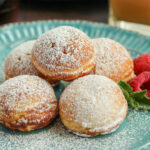
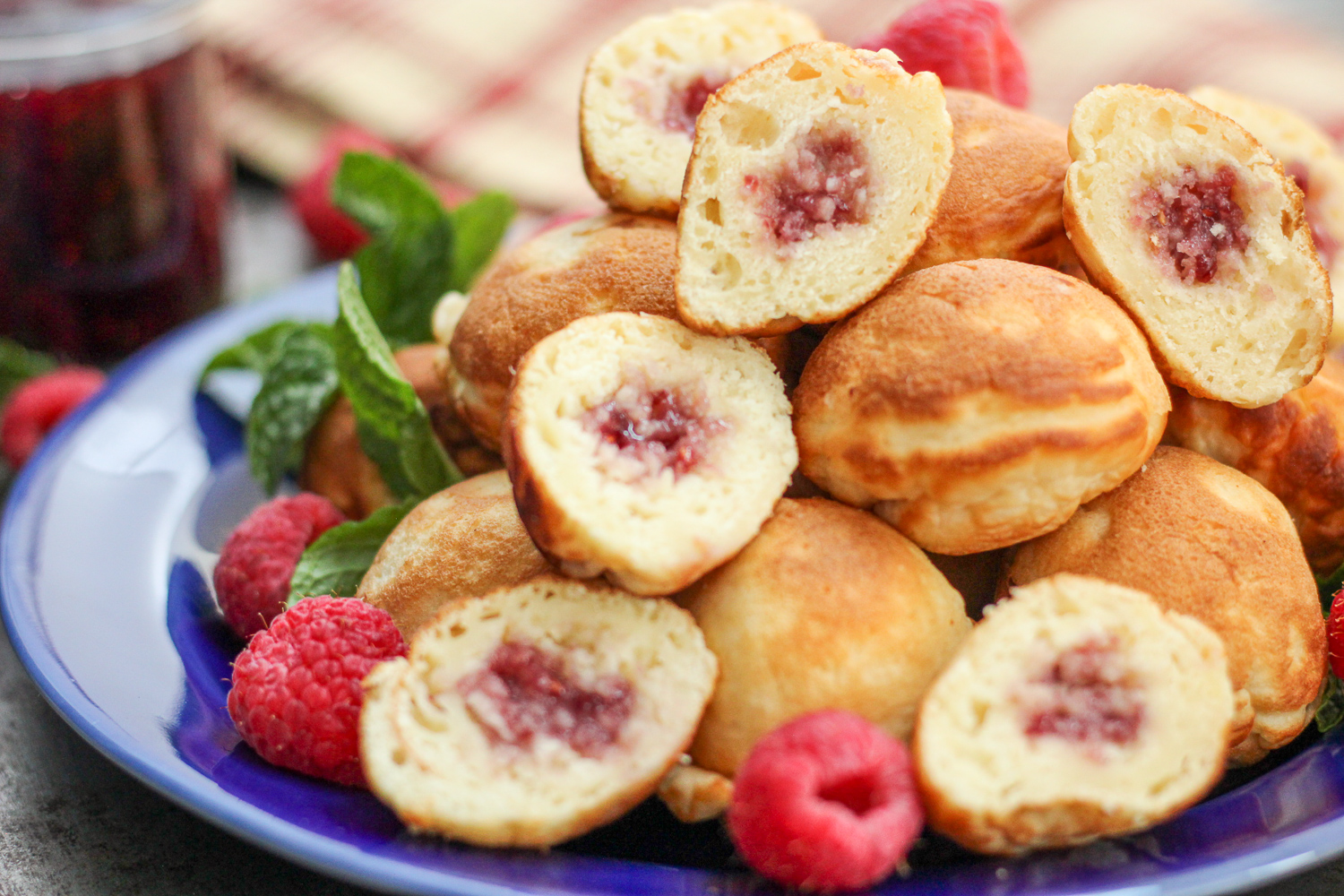
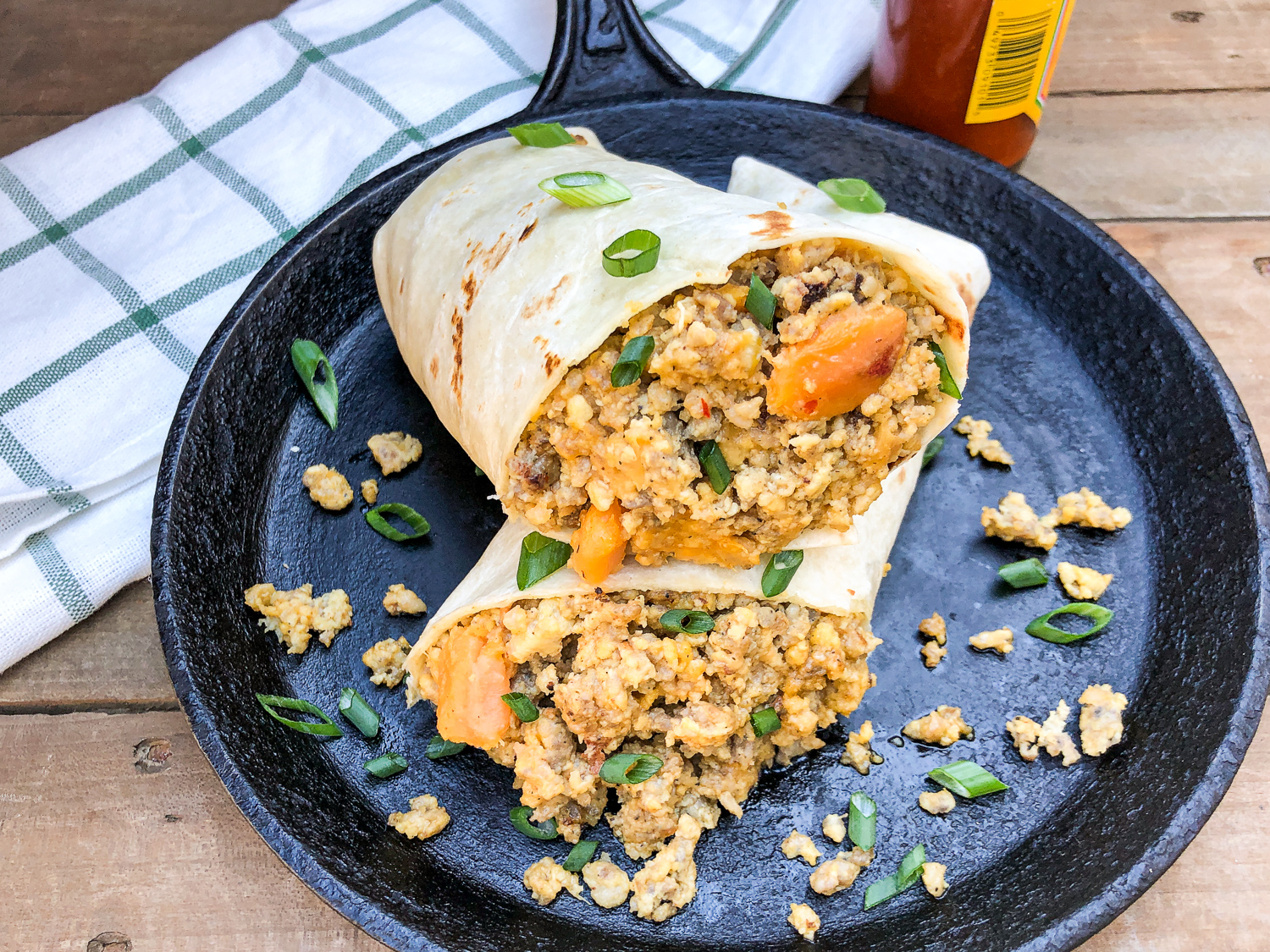
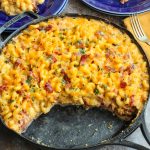
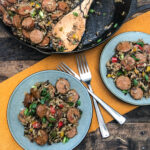
Love all the details you include with the recipe. I am going to make for my Danish friend as a surprise.
You have such a treasure with finding a family recipe. Double win with finding your cast iron pan.
Thank you, thank you for this recipe! My kids absolutely loved them. I am gluten-free myself and could not try them, but two empty plates are a good indicator that they were tasty Will definitely make them again.
I hadn’t heard of this dish before I came across your recipe, but I’m so glad I tried it! We made it for breakfast today and it was absolutely delicious – these little bites were perfectly fluffy and sweet!
These have been in my list to make for ages but I haven’t managed to get my hands on a pan yet. Love that you have a recipe handed down through the family!
I had no idea what aebleskiver was until reading this recipe. I can’t wait to try this out — they look delicious and fluffy!
i’ve never done something like that! def gonna try it this weekend!
What a cool recipe! I’ve never heard of this one and I can’t wait to make these and share them with my family!
What brand is your pan and where did you buy it?
Great question. I have several vintage pans. I believe there are several manufacturers that make them as well.
So happy to see this article about Aebleskiver! I am danish and we make them every Easter and Christmas or whenever the mood strikes! I have passed down my Grandmother’s recipe to my children and I hope they keep the tradition going!
This is so awesome! Thank you for sharing! I hope you have a wonderful Christmas.
I love aebleskiver! Didn’t know about the plural thing–we always refer to them as aebleskivers
This is a Christmas/winter tradition in my family that was passed along to all the women of the family, either when they became a certain age or married in, by my Great Aunt Lois on my dad’s side who was very proud of her Danish heritage.
Our family recipe is basically the same as yours. The main difference we do is use Crisco in the little pan bowls instead of spray. They come out crispier than a pancake, kind of like a funnel cake. The middle bowl is used to hold/melt more Crisco so you can spoon it into the other bowls as they run low.
That sounds really good to do the Crisco to make them slightly more crispy! Thank you for the suggestion and sharing with me! Happy Cooking. 🙂
I have never made these before, I used your recipe and instructions and they turned out amazing! thank you so much!
Awesome! I’m so glad you enjoyed!